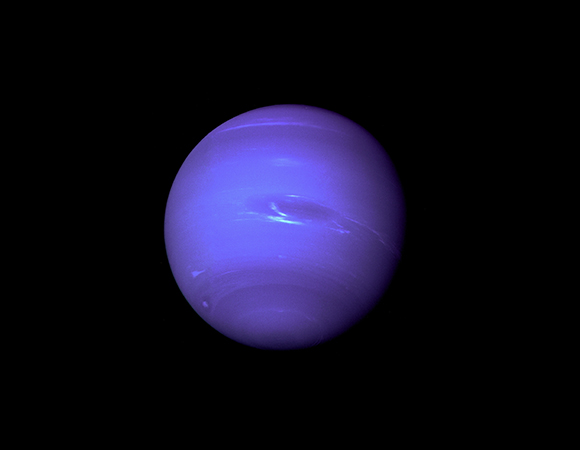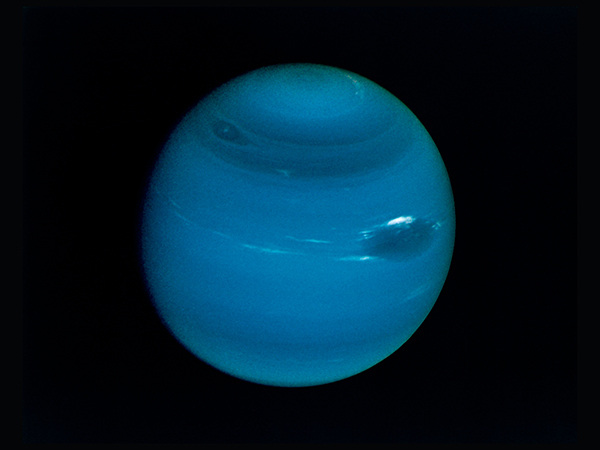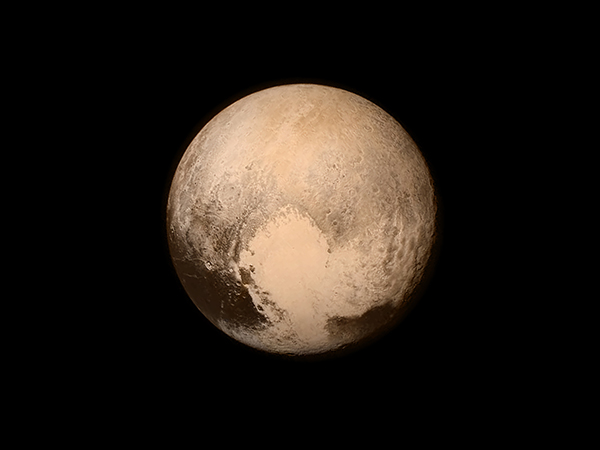


Neptune was discovered as the result of calculations. By the early
19th century, astronomers realized that Uranus was not following its expected
orbit.The gravitational pull of an unknown planet beyond Uranus seemed the
most likely explanation. In 1845, the English mathematician John Couch Adams
(1819-1892) announced that he had calculated the probable position of a planet
beyond Neptune, but his findings were ignored.
In June 1846, the Frenchman
Urbain LeVerrier did the same. This time, observers took notice. Johann
Galle (1812-1910) of the Berlin Observatory found Neptune on
September 23, 1846.


Neptune, like all the giant planets, has a series of
rings encircling it. The rings were discovered when
the planet passed in front of a star.
Results of an
occultation in July 1984 showed the typical
"blinking on and off," indicating that Neptune's rings
were blocking out the light of
the distant star. There
seem to be two main rings, with two faint inner rings.
The inner ring is less than 9 miles (15 km) wide. The
rings were
confirmed by Voyager 2 in 1989.

Astronomers continued to speculate about another
planet beyond Neptune. Pluto was eventually discovered in 1930
and was considered to be the ninth major planet until
2006. Between
1992 and 2006, hundreds of small icy bodies had been found beyond
Neptune, in what is called the Kuiper belt. They include Eris,
which is larger than Pluto.
In 2006, astronomers decided to
class both Pluto and
Eris as dwarf planets.